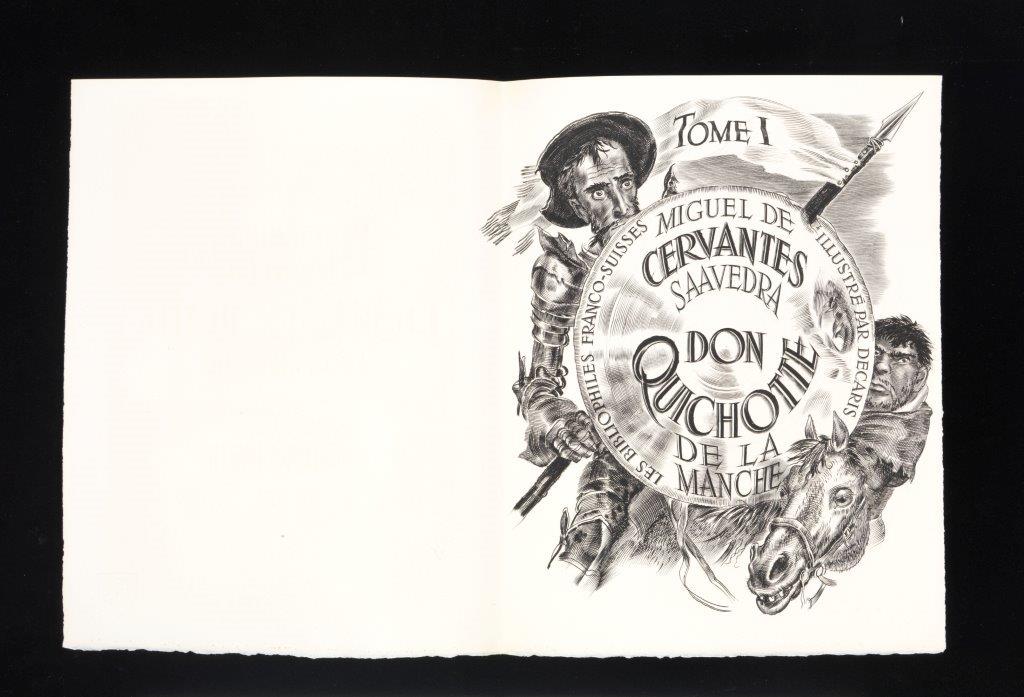
- Paris: Les Bibliophiles Franco-Suisses, 1951
- Part I; 2 vols.; in-4º; Vol. I: 233 pp.; Vol. II: 252 pp.; 131 ill.; Arches vellum paper
- Copies in unstitched sections, protected by sleeved cases with the title on the spine ,
- Inv. LM449A/B
- No. 49, printed for C. S. Gulbenkian, as a member of the Société des Bibliophiles Franco-Suisses, from an edition of 135 copies
‘Don Quichotte de la Manche’
Illustrated by Albert Decaris (1901–1988)
Translated by Jean Babelon (1889–1978)
Albert Decaris is indelibly associated with the art of engraving in twentieth-century France, as both an illustrator of literary works and a designer of distinctive postage stamps.
The invitation for Decaris to take part in the editorial project undertaken by Les Bibliophiles Franco-Suisses, of which Calouste Gulbenkian was a member, was passionately championed by the society’s founding president, Jules Exbrayat, who recognised Decaris’s particular aptitude for illustrating the work to be published.
Don Quichotte de la Manche was published in four volumes, corresponding to the two parts of Cervantes’ text. The first part was published in 1951 (volumes I and II) and the second part in 1953 (volume III) and 1954 (volume IV). Calouste Gulbenkian did not receive the volumes corresponding to part II, since he ceased to be a member 1951.
Decaris’s illustrations complied with Exbrayat’s desire for ‘great abundance’. In a total of 131 burin engravings (Part I), comprising full and half-page illustrations and vignettes, the illustrator gives graphic form to many figures, while leaving others to be evoked by the written word. If Decaris occasionally departs from the novel’s text, translated into French by Jean Babelon, he does so in order to find the images that best reinforce the subtext, almost always returning to the strict interpretation of the word in its multiple shifts in register from the vernacular to the erudite.
H. 35.3 cm; W. 25 cm